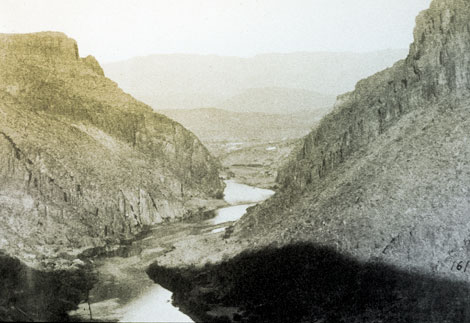

Theodore Roosevelt becomes President and signs the Reclamation Act, founding the U.S. Reclamation Service to reclaim the arid West by developing dams and irrigation systems in 17 Western states and territories. Arizona Territory receives two Reclamation Service projects: the Salt River Project and the Yuma Project on the Colorado River. Construction begins on a long-sought dam on the Salt River. Roosevelt Dam will become the keystone of the Salt River Project that, in turn, becomes one of the Reclamation Service's most successful projects.
PROJECTS
The Salt River Project
One of the first five projects authorized under the Reclamation Act was the Salt River Project in Arizona Territory. The cornerstone of the Project was a new dam downstream of the confluence of Tonto Creek and the Salt River, a location identified as early as 1889 as the ideal location for a dam. Although it received stiff competition from another dam to be constructed on the Gila River where it crosses through ... more
 View up the Salt River Canyon below the site selected for Roosevelt Dam, 1904. The dam site was identified as early as 1889 by surveyors. (Reclamation photograph)
View up the Salt River Canyon below the site selected for Roosevelt Dam, 1904. The dam site was identified as early as 1889 by surveyors. (Reclamation photograph)Early Western settlers understood that there was water, but that it was not always available at the time or place necessary for agricultural or potable uses. Settlers responded by developing small-scale storage and irrigation projects, as well as creating complicated Western water laws to allocate available water rights based on the concept of prior appropriation ("first in time, first in right"). Settlers diverted water from a stream or river and used it, but in many areas of the West, demand far outstripped supply. These early private and State-sponsored irrigation ventures often failed, however, because of lack of money or engineering expertise or both. Thus, as the 19th century moved into the 20th, pressure mounted for the Federal Government to intervene and assist in the development of Western water resources.
On June 17, 1902, President Theodore Roosevelt signed the National Reclamation Act into law. Federal support for western water projects had not been an easy task because of Republican opposition and some politicians' fears that federally controlled water projects would threaten state water laws. After a long uphill battle in Congress, and more importantly with backing from President Roosevelt, support for the Reclamation Act gained momentum thanks to the efforts of two Senators: Henry Hansborough of North Dakota and Francis R. Newlands of Nevada. It passed both houses of Congress by wide margins. The National Reclamation Act is also known as the Newlands Act for the dogged support this Democratic senator gave towards its passage. Many thought it aptly named because it brought "new lands" under cultivation. Unlike the 1894 Carey Act, state and territorial governments had no role in implementing the National Reclamation Act. ... More
